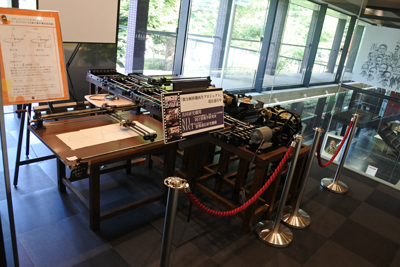

- Home >
- Artifacts of IP Heritage >
- 2009 >
- Differential analyzer
Differential analyzer

| Manufactured in | The first half of 1940's |
|---|---|
| Manufactured by | Syowa Kookuu-keiki Co. Ltd. etc. |
| Owner | Museum of Science, TUS* |
| Location of historical materials | MathSci Experience Center 2641 Yamazaki, Noda-shi, Chiba 278-8510, Japan Tokyo University of Science, Noda Campus |
| Visitor information | Open to the public |
| Contact | MathSci Experience Center, TUS Tel. 04-7122-9651 |
A differential analyzer is a large mechanical analog computer for solving ordinary differential equations using integrators. The principle for solving differential equations using a combination of integrators was invented by James Thomson in 1887. Vannevar Bush of MIT first developed a practical machine in 1927. In Japan, Aeronautical Research Institute of the Tokyo Imperial University collaborated with Syowa Kookuu-keiki Co.Ltd. developed the prototype of a differential analyzer similar to Bush's machine in 1942. The differential analyzer preserved in the Museum of Science, TUS* has a similar mechanical structure to that of Tokyo Imperial University's. It has also the nameplate of Syowa Kookuu-keiki. Therefore, the machine is assumed to have been built in the almost same period as Tokyo Imperial University's.
Shimizu Tatsujiro, a professor at the Faculty of Science, Osaka University gave a talk on a differential analyzer explaining its calculation method and the machine configuration he used in 1947, and the paper was published in the journal of Physical Society of Japan in the following year. Later, Prof. Shimizu moved to Kobe University, Osaka Prefecture University and then to the Faculty of Science, Tokyo University of Science. The differential analyzer used at Osaka University was transferred to Tokyo University of Science.
The machine is currently preserved in Museum of Science, TUS*, which has three integrators, an input table and an output table.
(*Tokyo University of Science)
